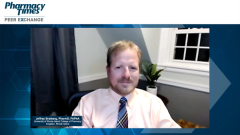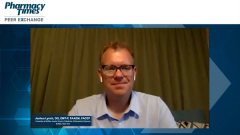
Implementing Protocols, Policies, and Programs to Save Lives
Experts weigh in on protocols, policies, and programs that influence patient safety and address when a conversation should ensue with patients about naloxone.
Episodes in this series

Peter Salgo, MD: If you want to have a protocol or a program to implement this, along with naloxone for narcotics, what protocols are out there? What programs are out there?
Charles Argoff, MD: Why couldn’t we envision all prescribing systems having built into their software that whenever an opioid prescription is given, a screen pops up? So much of the country now does e-prescribing.
Jeffrey Bratberg, PharmD, FAPhA: That exists. Rhode Island has the best co-prescribing legislation in the country, and I was a co-author on an American Journal of Public Health paper, showing that it is one thing to say, if you ask a pharmacist, you should do it. We encouraged our pharmacists in Rhode Island to dispense naloxone. And Virginia has this great law saying prescribers must offer naloxone. They saw a giant increase in it going out, which required co-prescribing high morphine milliequivalent prescription opioids, then opioids and benzodiazepines. We went even further and said we need to include even higher risk folks: people who have overdosed in the past, people with an opioid use disorder. There was legislation passed that included anyone with a mental health condition or used other concomitant CNS (central nervous system) depressants. We track it in our prescription drug monitoring program. We track naloxone at the health department level, and we saw a 700% increase in naloxone prescribing and a 1000% increase in the number of prescribers. It went from 30 prescribers to 500 prescribers in our tiny 1-million-person state of Rhode Island. We also saw that increase in all the other states that have co-prescribing. It is great to say you are not aware of it, and it is great to incorporate all these solutions, but I am a big policy person, and I think the FDA and the Department of Health and Human Services support that.
Peter Salgo, MD: I hate to admit that the electronic medical record [EMR], which has been annoying me now for many years, actually has some uses. There is one of those annoying pop-up boxes you cannot dismiss until you do something about it, which raises the question of when this comes in. At what point in care do you engage patients? Do you engage practitioners at the beginning or in the middle? Do you engage only when someone has had a problem? Where is this intervention and when does it occur?
Jeffrey Bratberg, PharmD, FAPhA: I think it is universal. How many people are totally in agreement with somebody using cigarettes? If we were in 1970 it would probably be all of us. If we were in 1980, maybe….
Peter Salgo, MD: Whoa, whoa, no—not all of us in 1970 liked them. We hated them.
Jeffrey Bratberg, PharmD, FAPhA: Maybe cigarettes were not totally supported in 1970. I am just saying that it takes a generation to denormalize a particular behavior. How many of you wore helmets on your bicycle when you were young? I did not. OK, you were all safety people, and that’s great. I did not wear a helmet and this is probably why I am here. I only fell, I forgot how many times.
I think the whole idea to consider is, how many years does it take for something to catch on when it is published in a randomized controlled trial? It is something like 8 years in primary care. This is why policy interventions have to work; this is why EMRs help. We have evidence in the literature that EMRs do help increase the implementation of naloxone, but it is still very hard.
Jeremy Adler, DMSc, PA-C, DFAAPA: You asked the question, when should you have the discussion about naloxone? The answer is you should have it at every point along the process. Instead of discussing when you should have it, let’s have a discussion about when you should not have it. It is a much quicker discussion. I think this is a safety measure with an excellent history; widespread use will increase the likelihood that it is available in the situation in which it is needed most.
Transcript edited for clarity.
Newsletter
Stay informed on drug updates, treatment guidelines, and pharmacy practice trends—subscribe to Pharmacy Times for weekly clinical insights.
























































































































































































































